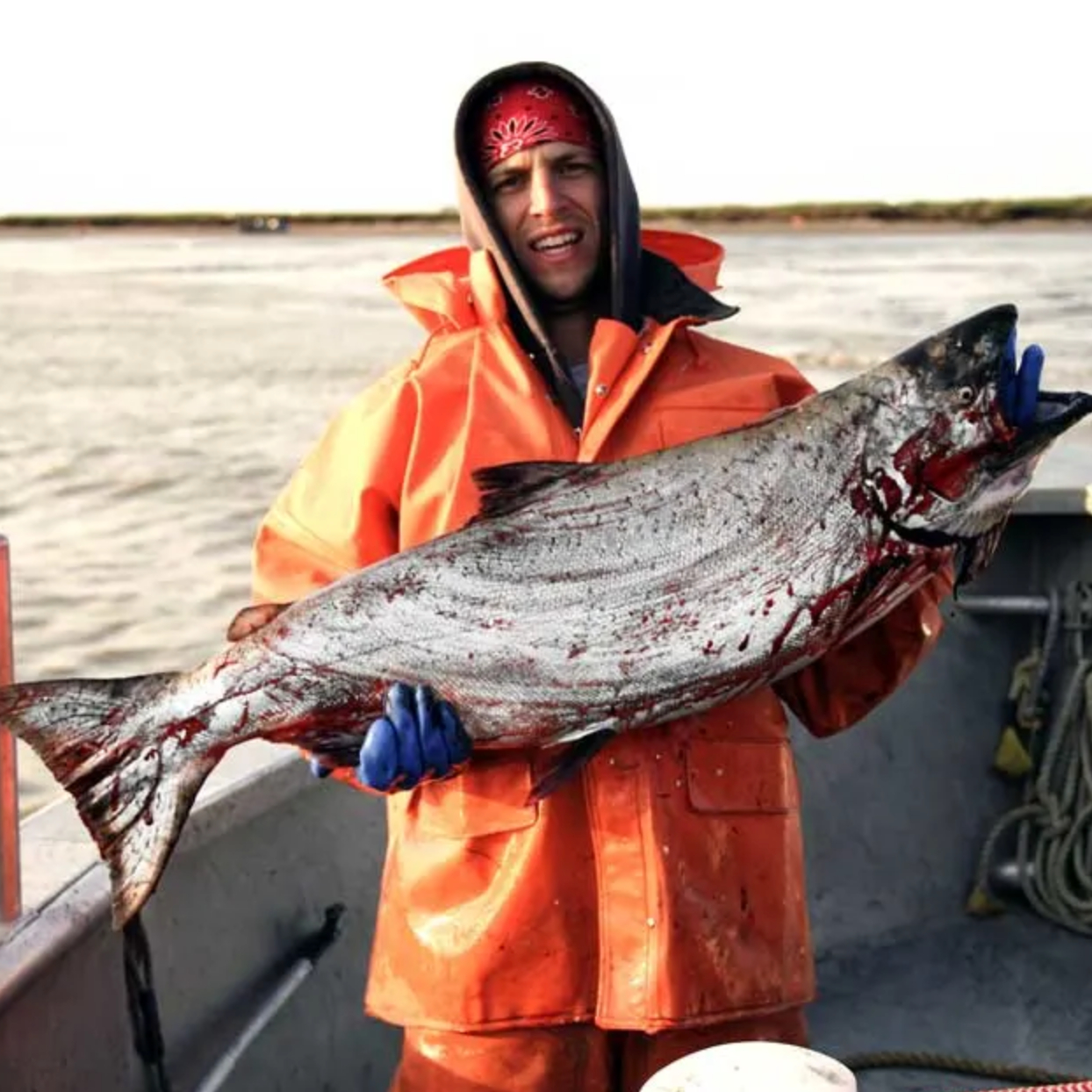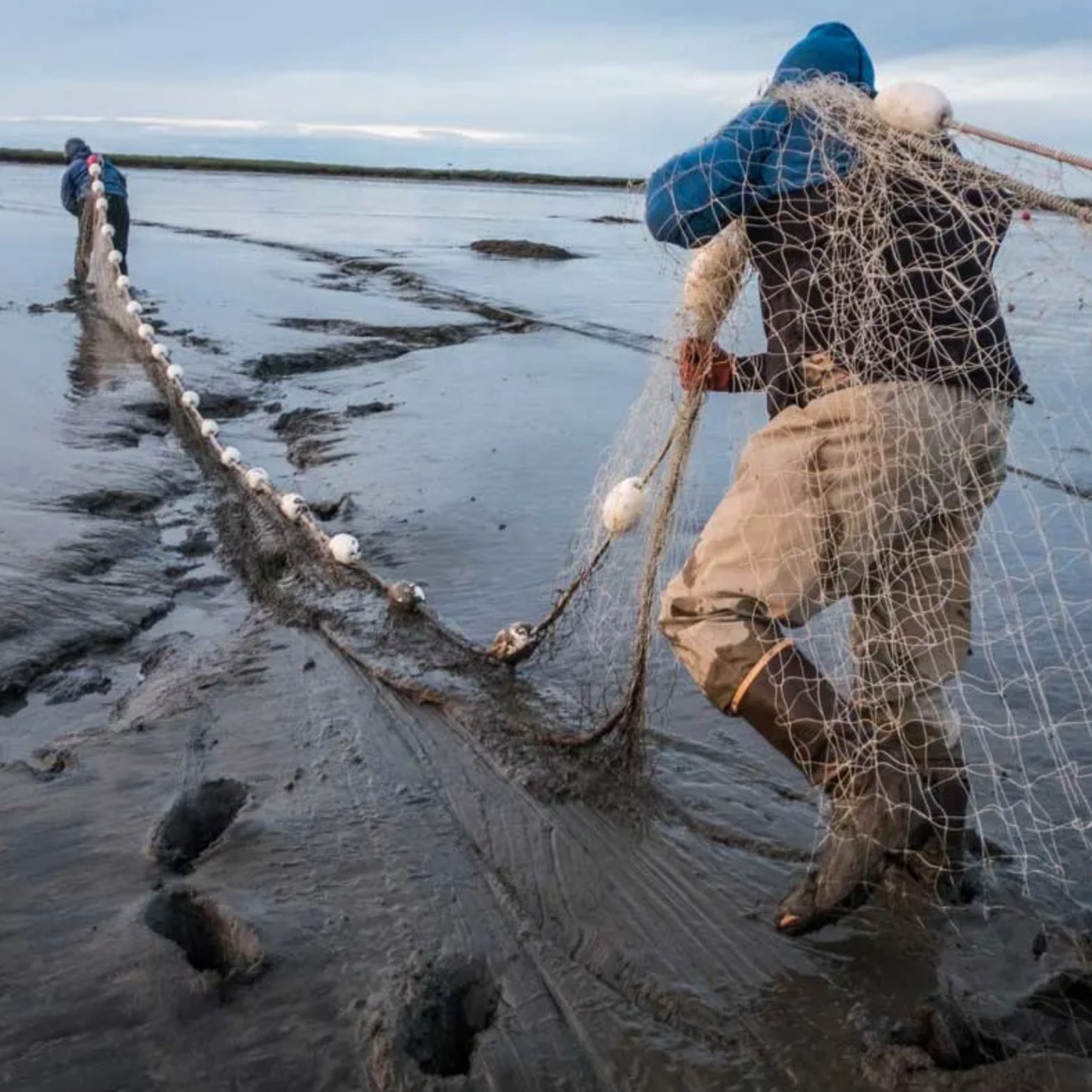Producer


Kwee-Jack Fish Co.
City: Laurel, MT, 59044
Website: https://eatwildsalmon.com/#
About Us
Kwee-Jack Fish Co. is based in Billings, Montana during the off-season, but in June and July each year, we harvest wild sockeye salmon from the frigid waters of Alaska’s Bristol Bay. We harvest our wild sockeye salmon from fishing sites located near the mouth of the Kvichak River in the waters of Bristol Bay, Alaska. Our boats are small to facilitate navigating waters that are often shallow. Tides can quickly bring 20 to 25 feet of water level change in a matter of hours, reducing a vast body of water to mud flats lined with narrow channels and trickles of water.
Our boats are simply large skiffs set-up with efficient outboard motors and hydraulic rollers for our set-net method of fishing. For meals and rest, we stay in cabins on the shore, without electricity or running water and with Grizzly bears for neighbors.
Our lives revolve around the tide schedule with our fishing process beginning as the water rises. Given our remote location, the small size of our fishing boats and the constraints of time, we enlist large tender vessels with refrigerated fish-holds to transport our catch to the professional processor nearby. As the water retreats for low-tide, we head to shore to eat and get a few hours of rest before meeting the rising tide to start the process all over again. Sockeye salmon run from approximately mid-June to about the third week of July.
Our boats are simply large skiffs set-up with efficient outboard motors and hydraulic rollers for our set-net method of fishing. For meals and rest, we stay in cabins on the shore, without electricity or running water and with Grizzly bears for neighbors.
Our lives revolve around the tide schedule with our fishing process beginning as the water rises. Given our remote location, the small size of our fishing boats and the constraints of time, we enlist large tender vessels with refrigerated fish-holds to transport our catch to the professional processor nearby. As the water retreats for low-tide, we head to shore to eat and get a few hours of rest before meeting the rising tide to start the process all over again. Sockeye salmon run from approximately mid-June to about the third week of July.
Practices
Bristol Bay boasts the largest Sockeye (Red) salmon run in the world, averaging over 30 million salmon each year for the last few decades. The fishery is vigilantly managed by the Alaska Department of Fish and Game, who oversee strict regulations for the commercial harvest of salmon resources. Marine biologists conduct studies each year to predict the return of salmon in subsequent years. Data is gathered on the number of sockeye that escape up-stream to their spawning grounds, or are harvested.
The commercial fishing fleet is granted fishing time based upon what is being observed as the season progresses; if salmon returns appear lower than desired or expected, fishing time is not granted until the salmon run has produced the results deemed necessary by fishery management.
Bristol Bay is free of dams, with very low populations living in the surrounding towns and villages. Sound, scientific management combined with these features of the pristine environment all contribute to making wild Alaskan salmon not only one of the healthiest sources of protein on the planet, but also a truly well-managed resource sustainable for generations to come.
The commercial fishing fleet is granted fishing time based upon what is being observed as the season progresses; if salmon returns appear lower than desired or expected, fishing time is not granted until the salmon run has produced the results deemed necessary by fishery management.
Bristol Bay is free of dams, with very low populations living in the surrounding towns and villages. Sound, scientific management combined with these features of the pristine environment all contribute to making wild Alaskan salmon not only one of the healthiest sources of protein on the planet, but also a truly well-managed resource sustainable for generations to come.
